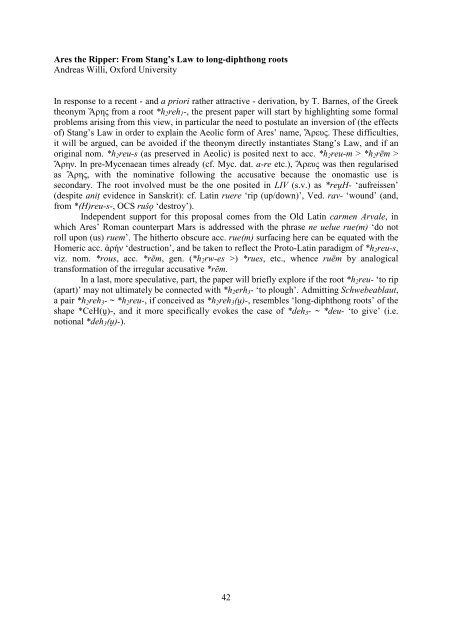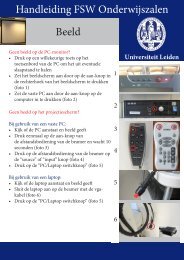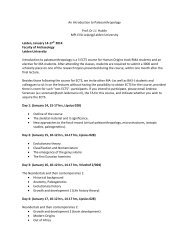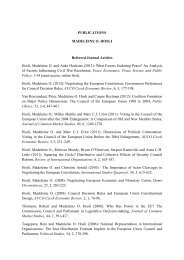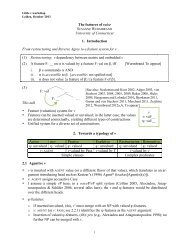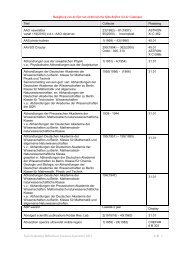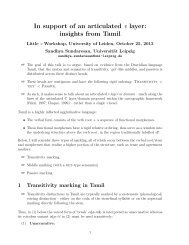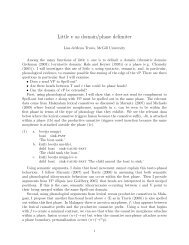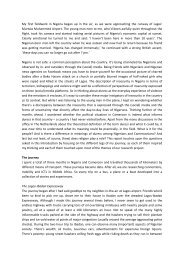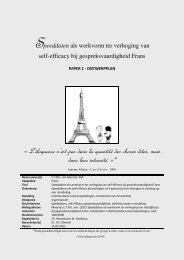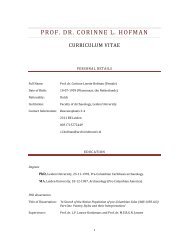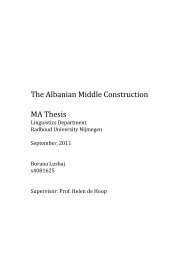Programme
Programme
Programme
You also want an ePaper? Increase the reach of your titles
YUMPU automatically turns print PDFs into web optimized ePapers that Google loves.
Ares the Ripper: From Stang’s Law to long-diphthong roots<br />
Andreas Willi, Oxford University<br />
In response to a recent - and a priori rather attractive - derivation, by T. Barnes, of the Greek<br />
theonym Ἄρης from a root *h 2 reh 1 -, the present paper will start by highlighting some formal<br />
problems arising from this view, in particular the need to postulate an inversion of (the effects<br />
of) Stang’s Law in order to explain the Aeolic form of Ares’ name, Ἄρευς. These difficulties,<br />
it will be argued, can be avoided if the theonym directly instantiates Stang’s Law, and if an<br />
original nom. *h 2 reu-s (as preserved in Aeolic) is posited next to acc. *h 2 reu-m > *h 2 rēm ><br />
Ἄρην. In pre-Mycenaean times already (cf. Myc. dat. a-re etc.), Ἄρευς was then regularised<br />
as Ἄρης, with the nominative following the accusative because the onomastic use is<br />
secondary. The root involved must be the one posited in LIV (s.v.) as *reu̯ H- ‘aufreissen’<br />
(despite aniṭ evidence in Sanskrit): cf. Latin ruere ‘rip (up/down)’, Ved. rav- ‘wound’ (and,<br />
from *(H)reu-s-, OCS rušǫ ‘destroy’).<br />
Independent support for this proposal comes from the Old Latin carmen Arvale, in<br />
which Ares’ Roman counterpart Mars is addressed with the phrase ne uelue rue(m) ‘do not<br />
roll upon (us) ruem’. The hitherto obscure acc. rue(m) surfacing here can be equated with the<br />
Homeric acc. ἀρήν ‘destruction’, and be taken to reflect the Proto-Latin paradigm of *h 2 reu-s,<br />
viz. nom. *rous, acc. *rēm, gen. (*h 2 rw-es >) *rues, etc., whence ruēm by analogical<br />
transformation of the irregular accusative *rēm.<br />
In a last, more speculative, part, the paper will briefly explore if the root *h 2 reu- ‘to rip<br />
(apart)’ may not ultimately be connected with *h 2 erh 3 - ‘to plough’. Admitting Schwebeablaut,<br />
a pair *h 2 reh 3 - ~ *h 2 reu-, if conceived as *h 2 reh 3 (u̯ )-, resembles ‘long-diphthong roots’ of the<br />
shape *CeH(u̯ )-, and it more specifically evokes the case of *deh 3 - ~ *deu- ‘to give’ (i.e.<br />
notional *deh 3 (u̯ )-).<br />
42


